Aims And Objectives
The current training practices in Kent Fire ad Rescue Services correspond to the National Framework, through constant improvements.
Showing the lack of national standard measurements for training and Development.
Support for standardized training and development in National Framework.
Recommend adopting IPDS for Kent Fire and Rescue Service.
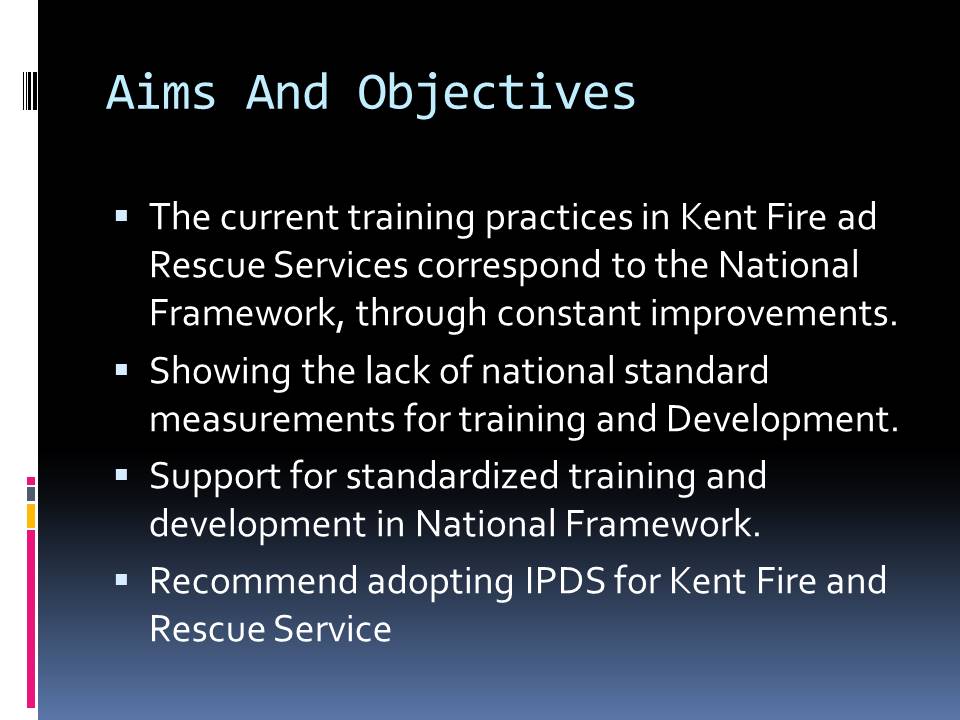
Current Training and Development Practices
The focus of the National Framework covers training and development of staff, provision of risk information, and incident command training (Department for Communities and Local Government, 2008).
Other significant areas include:
- E-learning initiatives.
- Training access to Retained Duty System (RDS) staff.
- Linking training to IPDS framework.
Training initiatives in Kent focus on:
- Investing in more live-fire training, performed on the defence training site at Manston and at the Denton Sea Training School (Kent and Medway Fire and Rescue Authority, 2010).
- New Equipment.
- Organizational changes to incident command formation and training.
No information Integrated Personal Development System.
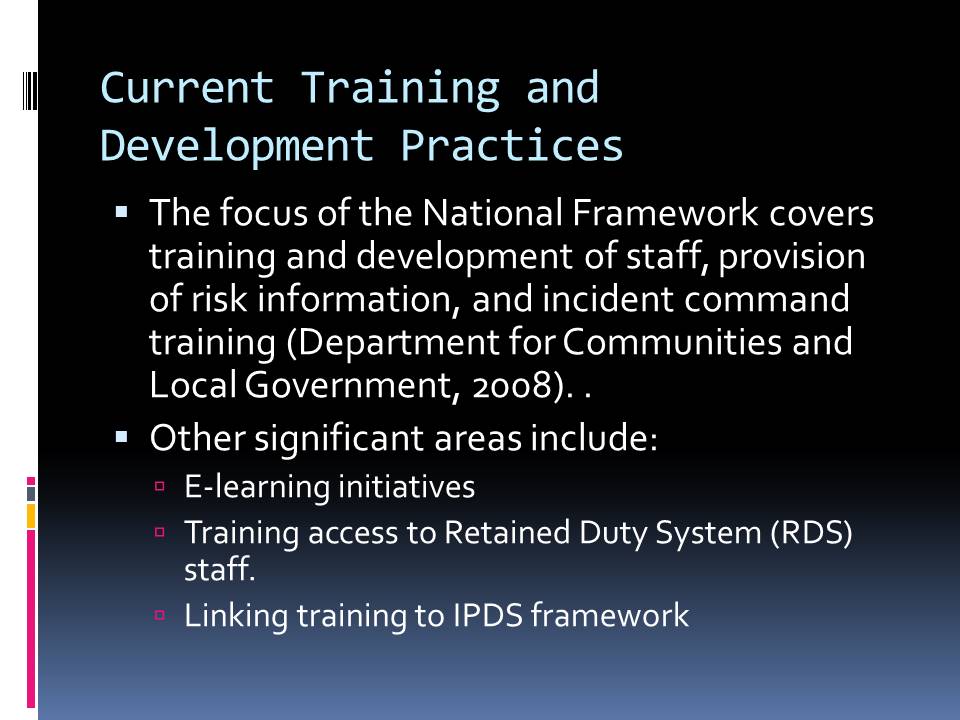
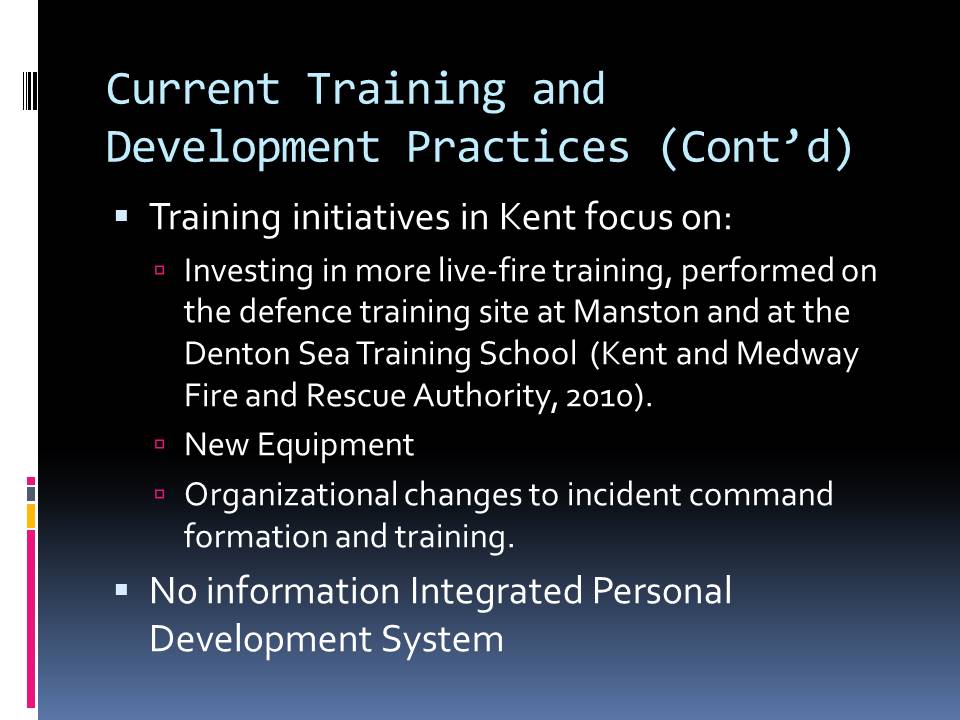
Recommendations
Equal focus on development initiatives as well as training.
Focus on the development of skills and competencies.
Adopt and, if necessary, modify Integrated Personal Development System (IPDS) to govern training initiatives in Kent Fire and Rescue Service.
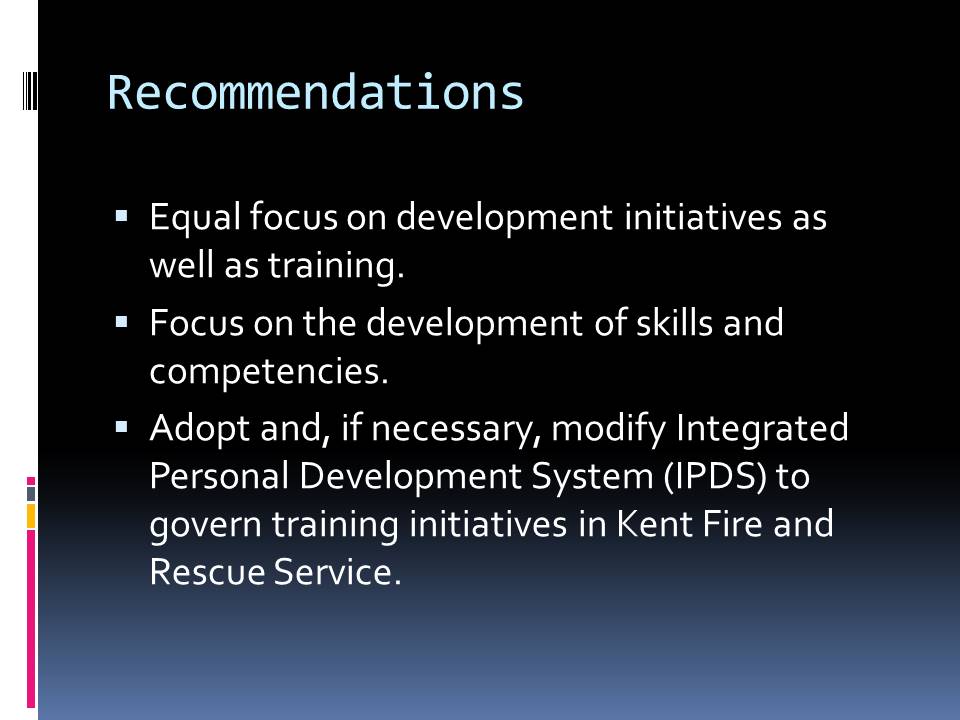
Support in Different Frameworks
Civil Contingency Act:
- Emphasis on training staff.
- Maintaining plans for emergency prevention.
National Framework:
- Training and development is one of the key areas for improvements.
- Linking to the IPDS framework and National Occupational Standards.
- Sharing of Risks and Critical data.
Bain Report:
- More training for senior and retained staff.
- Human resource management programs.
- There is a significant role of IPDS in training and developing staff.
- Recommendation of Integrating IPDS into HRM practices (George Bain et al., 2002).
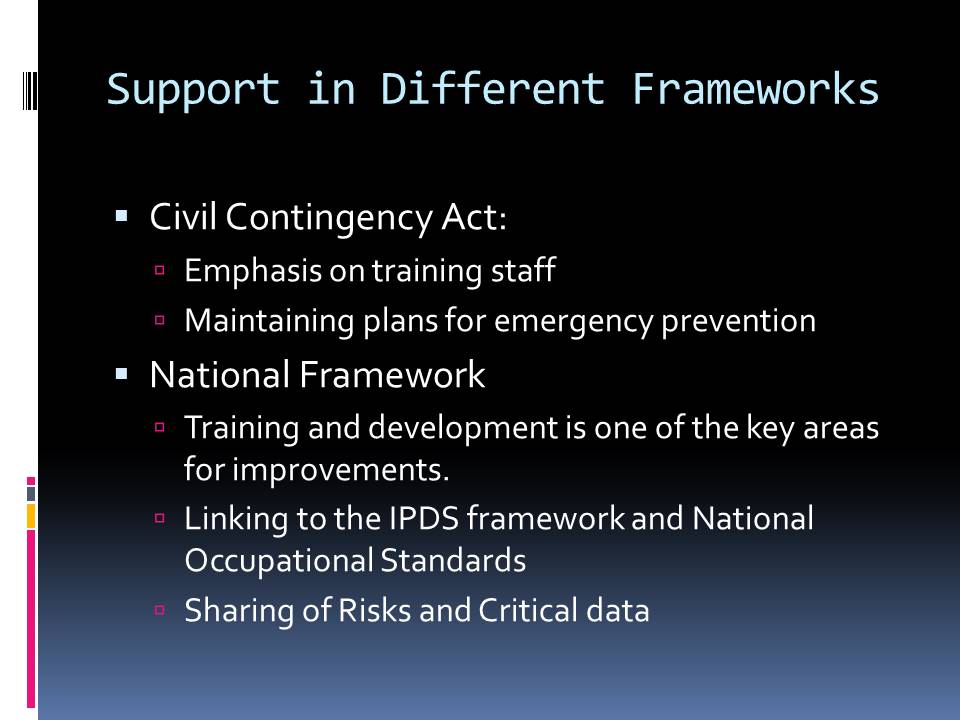
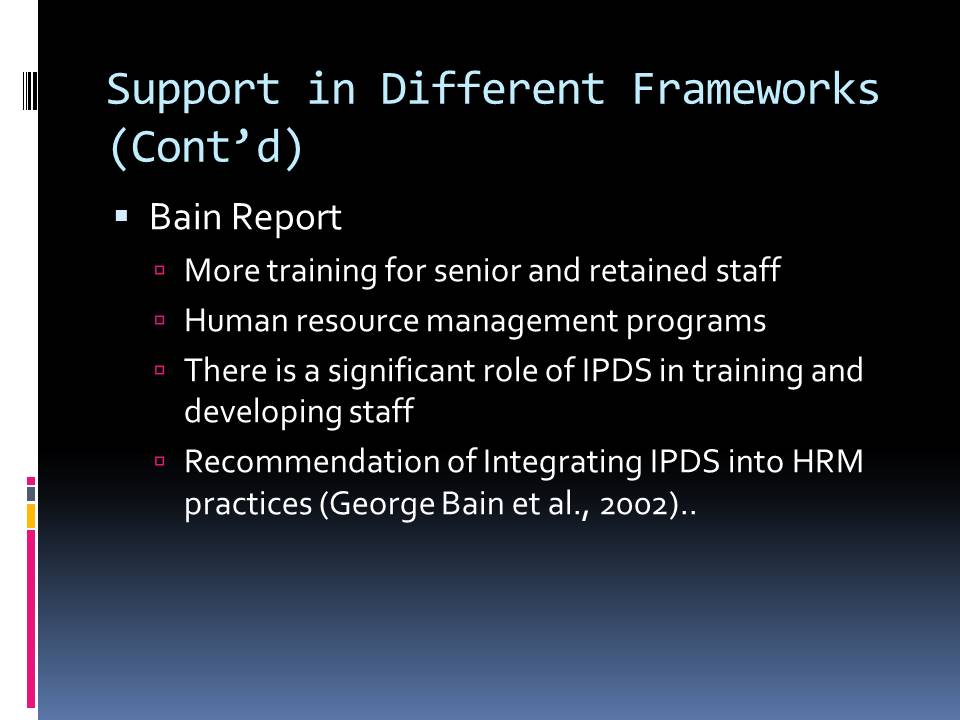
Kent Fire and Rescue Service
Live Fire Training.
Maintaining skills and competences within an environment with reduced incidents.
Two elements in training:
- Two day course at Training Centre for theoretical and practical training.
- One live fire training event.
Training using new equipment.
New two-year live fire and breathing apparatus refresher program.
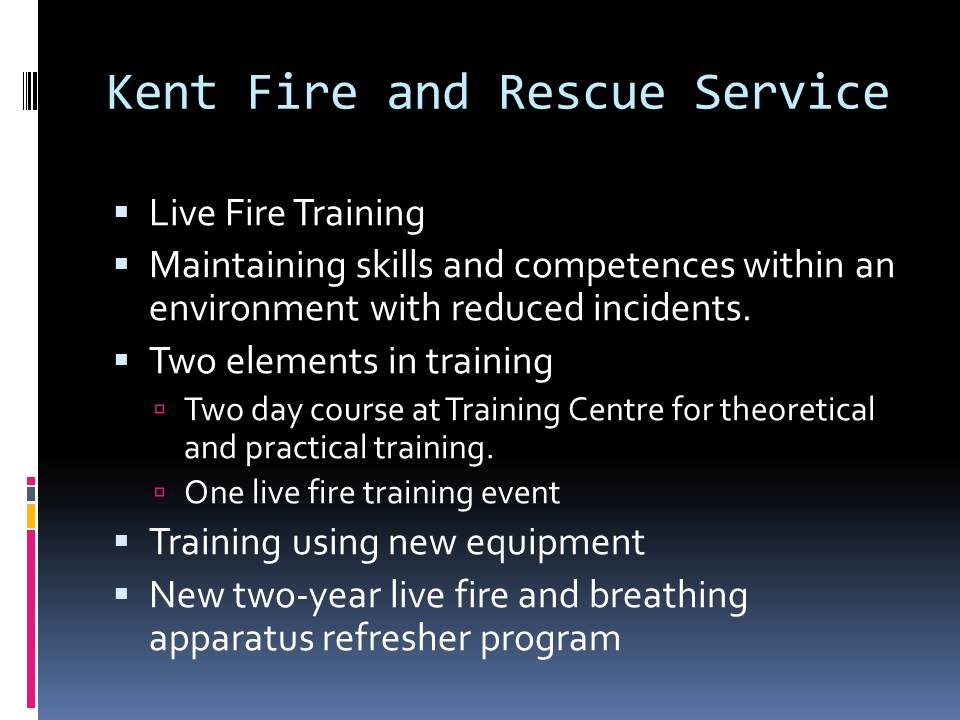
Training and Development in IPDS
The Integrated Personal Development System (IPDS) is training and development for the fire service and based on national standards and a framework of skills and competencies.
IPDS areas of focus include:
- Training and development according to identified need and risk assessed.
- Individualized approach toward training need and roles.
- Coaching and on-the-job training.
- Linking training to workplace assessment (Communities and Local Governments, 2009).
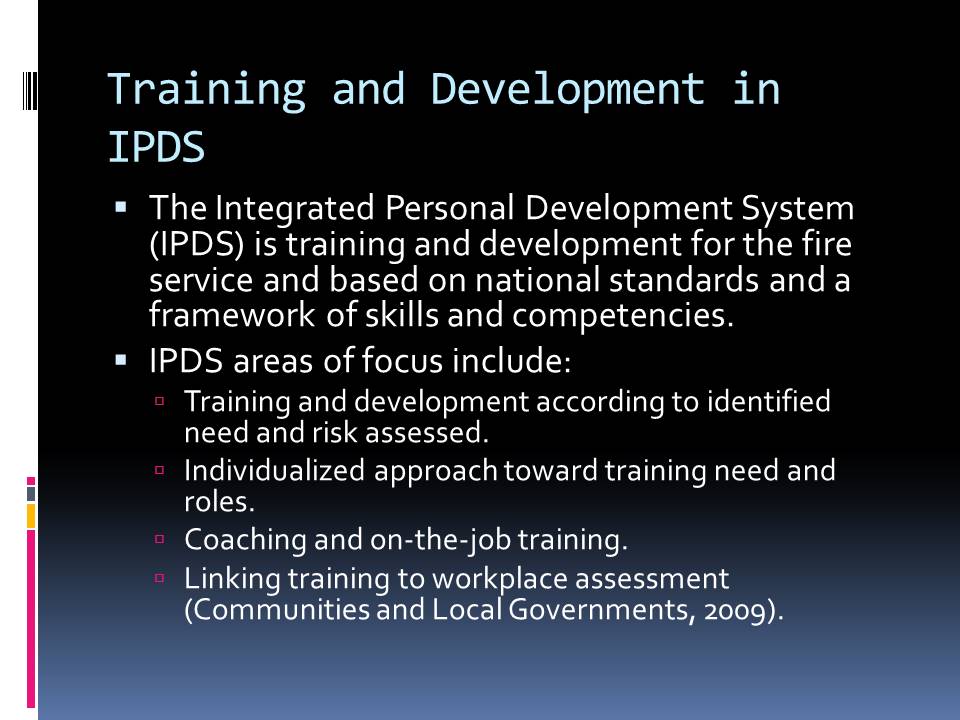
Summary
There is a sufficient emphasis on live training in Kent Fire and Rescue Service.
The choice of skills and competencies to develop is based on Improvement Notices served by the Health and Safety Executive.
There is a need to train and develop competencies against national standards.
Individualized approach when developing programs according to risks associated with each individual role.
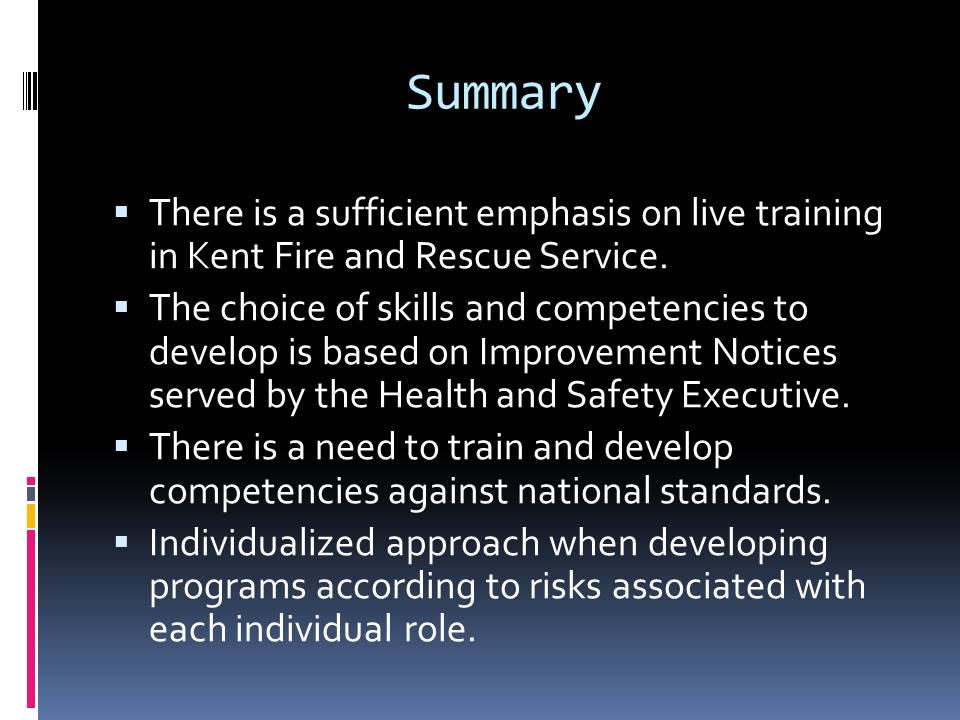
References
Communities and Local Governments. (2009). Integrated Personal Development System: Code of Practice. Communities and Local Governments. Web.
Department for Communities and Local Government. (2008). Fire and Rescue Service National Framework 2008.
George Bain, Lyons, M., & Young, A. (2002). The Future of the Fire Service: reducing risk, saving lives. Fire and Resilience.
Kent and Medway Fire and Rescue Authority. (2010). Integrated Risk Management Plan 2010/2013. Kent and Medway Fire and Rescue Authority. Web.
Parliament of the United Kingdom. (2004). Civil Contingencies Act 2004.